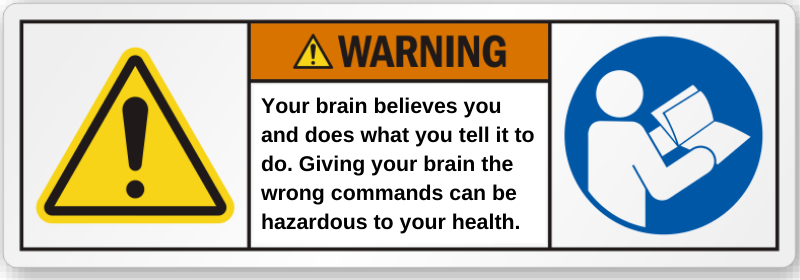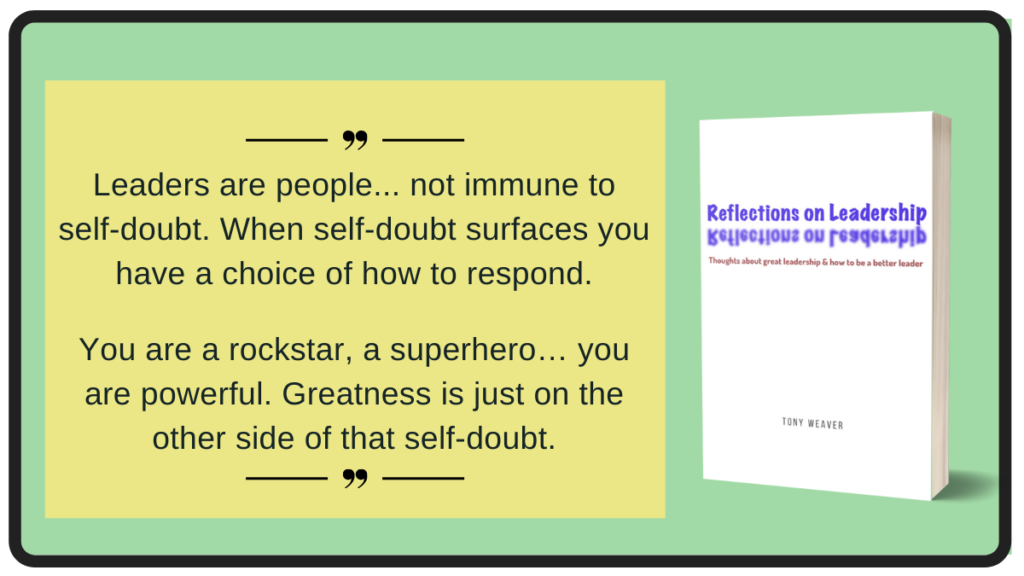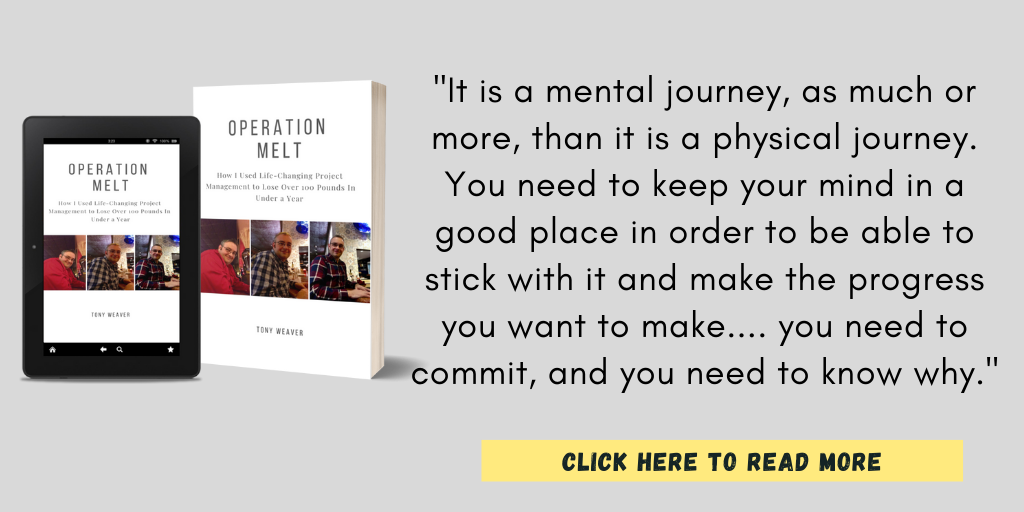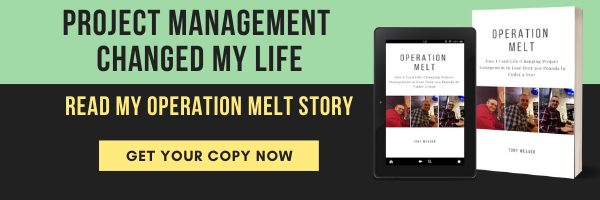Your brain is a powerful tool, but it doesn’t come with an owner’s manual. If it did, it would include this important warning to prevent you from undermining your happiness. You have the power to silence your brain’s lies with one simple exercise.
Amuse Bouche
Before we get to today’s post, I offer you this light “amuse-bouche” to entertain your mind before we get down to business. Like any other amuse-bouche, you may hate my “dad joke,” but it is worth every penny that you paid for it, right?
I used to think that my brain was the most important organ in my body, but then I thought: look who’s telling me that.
Goal Success by Choice
Do you have dreams that you are trying to make come true? Do you have a goal that you are trying to crush? Success doesn’t happen by chance. Success is a series of choices that can make you unstoppable. Goal Success by Choice helps you make these choices to move you closer to your goals.
Are you ready to help build a world where no goal dies of loneliness?
The brain’s owners manual should include 1 important warning
The world can move or not by changing some words.
Toby Ziegler, The West Wing
If nobody has ever told you this before, please allow me to be the first: you are NOT your brain.
Your brain is a tool that you use and a pretty important one. Because your brain is a tool, you have control over it. Unfortunately, your brain does not come with an owner’s manual (which I think is a big miss), so you have to figure out how to properly operate it as you go. If your brain did come with an owner’s manual, it would include an important warning.

Always Listening
I interact with many people every day in my day job, through Operation Melt and my personal life. Something I like to do during these interactions is to listen to the language that people use to describe themselves. Beware, I am always listening!
Sometimes, the things I hear people say about themselves are pretty shocking. Here are some examples of a few things that piqued my interest when I heard them.
- I am such an idiot!
- I’m old, tired and grumpy. (In response to “how are you today?”)
- I’m not a leader, or I’m not a good leader.
- I could never write a book.
- I’m such a control freak.
- I’m a total mess, or my life is a total mess.
- I’m old and fat.
The list of the self-undermining statements I hear people say could continue for many pages. They make me cringe every time. But, I am just as guilty for using these statements as a form of self-deprecating humor. Plus, these are just the things that people have said out loud. I can’t imagine the internal self-talk that accompanies them.
Guess what? I am not alone in listening to these statements.
Your brain is always listening to what you are saying too. Not only is your brain listening to you, but it also believes what you are saying. That thing you said in passing, maybe as a joke, wasn’t perceived that way by your brain.
Your brain interprets these self-undermining statements as commands.
Programming Your Brain
With the absence of an owner’s manual, many of us don’t understand how our brain works. So, please indulge me as I explain a key feature of your brain that you can use to make your dreams come true. This same feature can also be used to steal away your own happiness.
Meet your RAS or Reticular Activating System.

The RAS is a two-inch section of your brain situated at the top of your brain stem. It receives input from all of your senses and filters what gets distributed to other areas of your brain. The RAS often gets referred to as the bouncer in the nightclub that is your brain. It decides which pieces of information are allowed into your conscious brain.
Consider how much information your brain is bombarded with every second. Every sight, every sound, every smell, the sheer volume of data is astronomical. But, many neuroscientists agree that your conscious brain can only process around one hundred pieces of data per second. The role of the RAS is to quickly sort through the incoming data to determine what gets processed consciously versus what remains in your unconscious mind. It all goes somewhere.
The RAS is an important tool for goal-setting, motivation and ultimately, your happiness. The RAS is very goal-oriented and will do what you tell it to do. You can change the programming of your RAS simply by telling it what to focus on.
A simple example of how you can program your brain using your RAS is when you consider purchasing a car. If you are thinking of buying a specific car, say a Honda Accord, you have told your RAS that a Honda Accord is something interesting to you. This means your RAS will now prioritize this piece of information and allow it into your conscious brain. Next thing you know, you are seeing Honda Accords everywhere you look.
What Are You Telling Your Brain?
The car example is a pretty simplistic example of how you can program your brain by telling it what to prioritize, but this is a powerful tool. A significant portion of life coaching is focused on helping clients learn to harness their brains’ power and refocus their thinking.
By learning to focus your brain, your life can become instantly happier. You can also improve the probability of success with your goals.
When you have a goal, you can harness the power of your RAS. If you tell your RAS to focus on a specific goal or ask it a question, it will continue to process these things in the background, without you even knowing it, until the goal is achieved. I did this (without knowing it at the time) when I told my brain that I would lose over one hundred pounds in under a year. My brain learned that this was important to me and remained focused on it around the clock.
Unfortunately, your RAS doesn’t distinguish between positive commands and negative commands. If you tell your RAS something like “I hate Mondays,” it will interpret that as a command and start processing it. Your RAS will allow every piece of data into your brain to reinforce that you hate Mondays. It essentially becomes a self-fulfilling prophecy.
Uh oh! We may have a problem here, huh?
When you make the self-undermining statements above, they aren’t just throwaway comments and self-deprecating jokes. They are commands for your brain. When you tell your brain, “I’m such an idiot,” your brain will look for every possible piece of data to reinforce this and to turn it into a deeply-held belief.
Suddenly, your brain has taken a joke and turned it into a reality. But the original statement wasn’t the truth. So, now your brain believes a lie.
Reprogramming Your Brain
Guess what? We have some work to do to purge these lies and refocus your brain on more positive beliefs. We will approach this in two steps:
- Telling your brain what to focus on starting now
- Undoing the prior damage and silencing the lies
Let’s start with telling your brain what to focus on now. What do you want your RAS to focus on? Do you have a goal? Not a hundred goals, but one that you want to be your focus right now?
In January, I talked about how to use the wheel of life to figure out which areas of your life need a happiness upgrade. Then, using that information, how to use my ABCD approach to create one or two big life goals for the year. Then I walked through the ultra-important step of creating a strong “why” for those goals (that was my prior explanation of brain science and your limbic system). Then I wrapped up this series by describing how to set yourself up for success by creating SMART goals, a vision and an elevator speech.
If you haven’t created your goal yet, this is the right time to do it. Once you do, this will keep your RAS busy and focused on the positive result you are seeking.
Pro tip: a SMART goal is the type of thing that makes your RAS salivate. It knows what to do with that and keeps focused on it around the clock. Similarly, your vision gives the RAS a picture of what future you are trying to build, and it won’t rest until that is reality.
Ok, got your goals now? Are they written down? Good!
Place these goals around your house, car, office, or any other place where they will be visible. The more you see them and read them, the more your RAS will know that they are priorities for you and stay focused.
Now, it is time to clean up the lies that have been encoded into your brain.
Silencing the Lies
What are the self-undermining statements that you say about yourself? What is your inner critic telling you every day? You probably don’t know off the top of your head because they are being processed on autopilot now.
Default behavior is all about coasting through life on autopilot instead of being deliberate about our actions. Living life through default behaviors comes with a hefty price tag. Success is not an accident, it requires work, and it requires you to choose to succeed. This is where disciplined behaviors are needed.
Discipline Not Default, 8/22/2021
It’s time to start paying attention to your words to catch these. Ask yourself, “what negative statements do I regularly make about myself?” If you ask it out loud, even better. By asking this question, you will make it important to your brain to listen for your inner critic. This lets you turn your RAS against itself to find these statements and identify that inner critic that keeps lying to you.
The types of self-defeating statements you are looking for usually start with the following words:
- I am…
- I’m just…
- I’ll never…
- I can’t…
- I’m not…
Listen for these statements and make a note of them so we can silence these lies in your brain.
Once you have your list of statements, or even just a few to start with, it is time to use the Silencing the Lies exercise. The goal of this exercise is to turn your inner critic’s lies into powerful, motivating affirmations. It will help you find the real truths about yourself.
Here’s how it works.
You will need a pencil, a pen and some blank paper to get started. For your convenience, I have also created a template that you can download in the resources section of Operation Melt.
Focusing on a single area of your life at a time (e.g., career, relationships, etc.), think about all of the lies that your inner critic tells you. Tip: the Wheel of Life exercise may be a good starting point when evaluating the various areas of your life.
- On your blank paper, use the pencil to write down one of these lies.
- Skip a few lines (about 4 lines is usually sufficient)
- Still using the pencil, write down the next lie.
- Skip 4 lines again.
- Keep repeating this until you have written out all of the lies for this area of your life.
Once you have identified the lies that your inner critic is telling you, it is time to correct these lies… let’s set the record straight.
Put away your pencil and grab your pen. You are creating a permanent record this time.
In the blank space under each lie, it is time to correct it by writing the truth.
The truth could simply be the opposite of your lie, or it could be something even nicer and more positive that is more accurate about yourself. What do you wish that your inner voice would have said to you? Be super positive here and reach for the most self-affirming belief that you can find.
IMPORTANT: your truth should be written as a positive, present tense statement. Avoid using terms such as “don’t,” “isn’t,” “not,” and other negatives. Here is an example
- The Lie: “I’m just a follower, and nobody cares about my opinions.”
- Ineffective truth: “I’m not just a follower.”
- Effective truth: “I am a leader. I have valuable opinions and insights.”
Once you have the truths that contradict each of these lies, it is time to change your brain’s programming. Please don’t skip this step; it is how you silence these lies for good. Otherwise, these insidious lies will creep back into your brain … ain’t nobody got time for that!
Read all of your lies and truths every day for 7 days. Do this at least once per day or multiple times throughout the day. This would be an excellent upgrade to your morning routine and pairs nicely with Mel Robbins’ High Five Habit.
On the 7th day, it is time to get your pencil back out because you need your eraser. Erase every one of your lies that you wrote in pencil on your paper.
Once you have erased the lies, and only the truths remain, don’t stop reading them daily. Continue reading your truths at least once per day. Read them any time you need a jolt of motivation and positivity.
Repeat this exercise whenever you feel negativity and self-criticism start creeping into your brain. Remember, that negative voice isn’t you, and you have the power to silence it!
An extra benefit of training your brain to focus on the truths will surface the next time you make a self-undermining statement. Your brain now knows the truth and will say (to borrow from The Simpsons), “why must you turn our brain into a den of lies?!” This means these statements will stop losing their power!
Don’t forget, I’m always listening and so is your brain!
So What?
Your brain is a powerful tool that you can use to achieve your dreams. Unfortunately, without having an owner’s manual for your brain, you miss out on important warnings. One wrong move, and you risk turning this powerful tool against you and undermining your happiness. So, be careful what you say about yourself to be sure your brain is focused on what is really important to you. When your brain starts believing the lies that your inner critic told it, you have the power to silence those lies with one powerful exercise.
Need some help from somebody who asked his RAS, “how can I help people achieve their goals and build a world where goals don’t die of loneliness?” I’m your guy!
Click Here to learn more about my Operation Melt coaching services.
Beware of the Robots!
Was this post helpful or interesting to you? Do you want to read more? Don’t trust it to the social media algorithms.
Defeat the robots by joining my email list below and get these posts delivered directly to your inbox every week.





 Meet Coach Tony
Meet Coach Tony